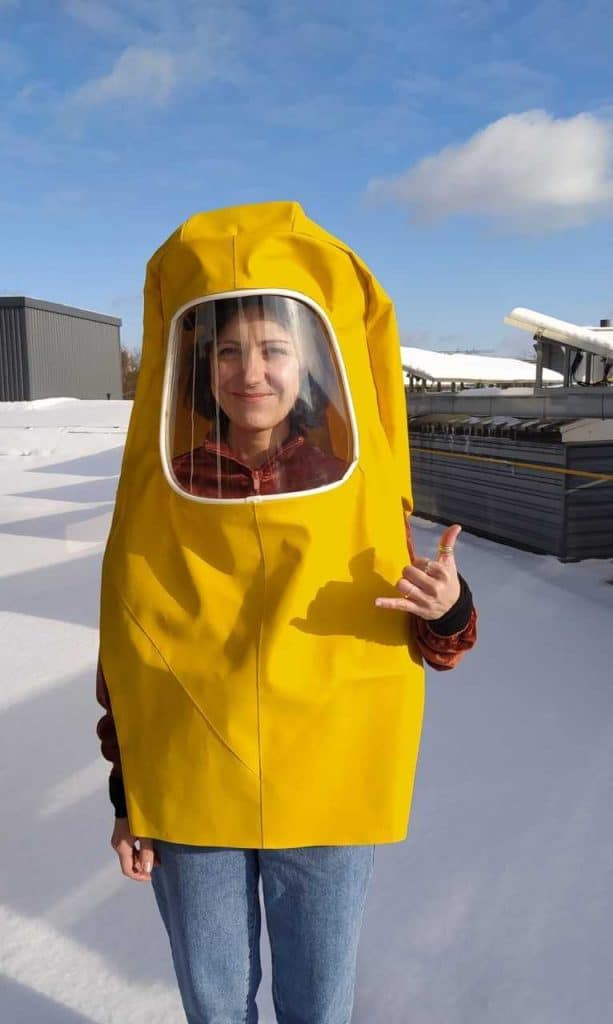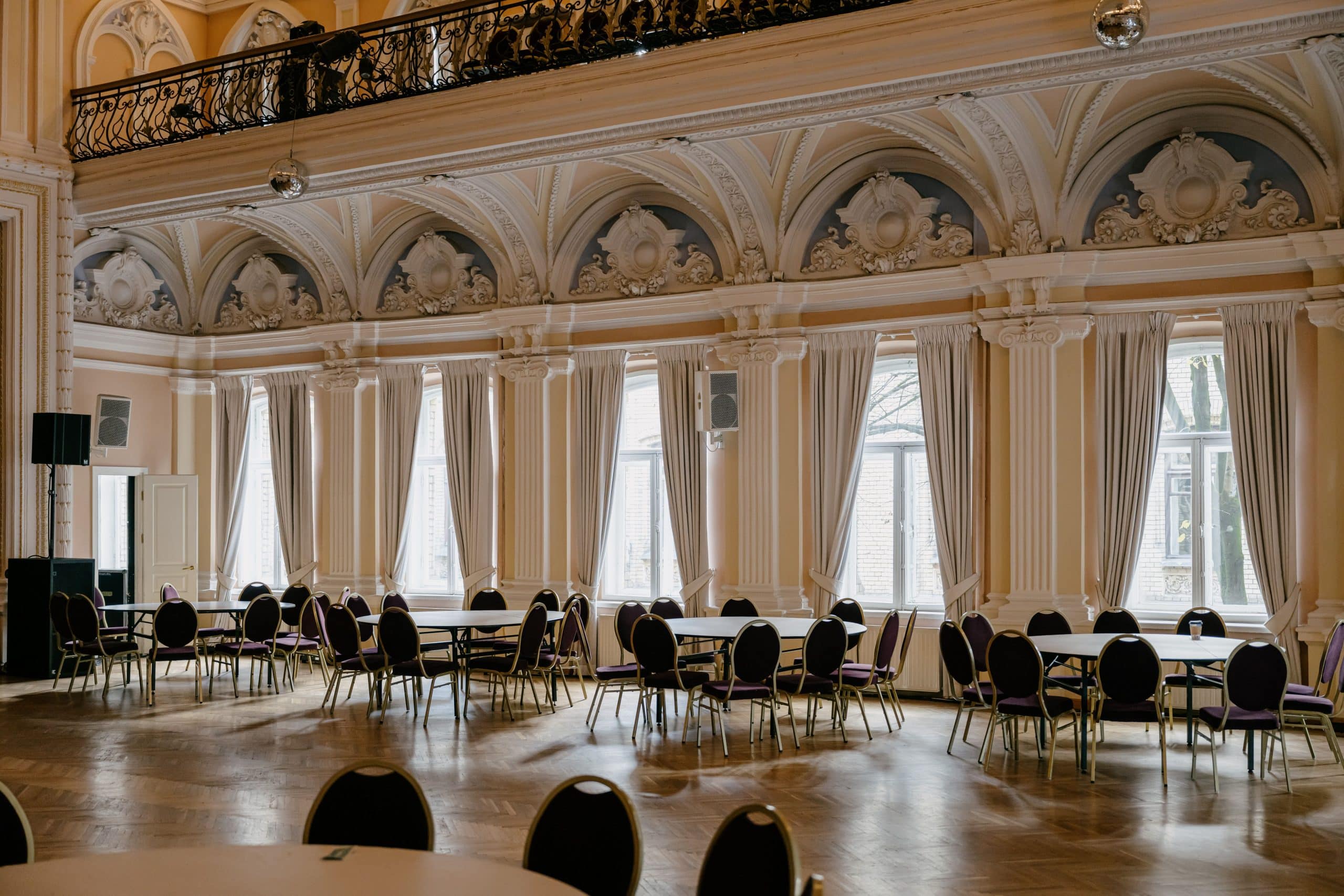Rūta Lėčaitė is a costume designer who worked on such films as “Vesper”, “Runner”, “Chernobyl”, “Parade”, “The Generation of Evil” and “Nova Lituania”. This year, In Lithuania the artist was nominated for the “Silver Crane” award for the costumes in the motion picture “January” and in Latvia she won an award in the same category. We meet with Rūta in her studio, where, among many costumes and accessories, work is in full swing for a new film project. She opens up to us about the everyday life of a costume designer and shares her thoughts on the changing film industry in a conversation initiated by the Vilnius Film Office. Rūta, let’s start from the beginning: how did you discover cinema, and why did you choose this particular career path?
I studied costume design and scenography at the Vilnius Academy of Fine Arts, and I was already looking for work in my first year. Finally, I got a job in the theater. I also started working on advertisements and photo shoots. But after getting the bachelor’s degree and enrolling in my master’s studies, I experienced a creative drought—some sort of crisis. I went to Spain, where I worked as a fashion teacher, training young people who were about to graduate from school and were aspiring to study the arts or fashion design. Besides that, I worked as an art therapist in youth centers and orphanages. Then came up an opportunity to take a film editing course taught by a very experienced lecturer who had worked in Hollywood many years ago with Woody Allen, Quentin Tarantino, Tim Burton, and other cinema heavyweights. He kept sharing all kinds of stories and memories with us. This was when I realized that when I return to Lithuania, I will try to enter the cinema world. I wrote a couple of letters and inquiries to young directors, and gruadually I realized that my professional circle was expanding as I was being invited to work on film projects more and more often. I also realized that I really like it and I’m good at it.

This was almost 12 years ago. What still impresses you about your work?
Working in the film industry is not easy. When you sign up for one or another project, you know that it is notgoing to be be a walk in the park. You should always be prepared for the worst, yet believe that everything will be fine. On a positive note, there is no monotony in cinema; there are always challenges that make you think fast and come up with creative solutions; there is constant creativity; and you grow with each project. I love cinema people: they are an interesting bunch of characters; they inspire me, teach me, and help me learn new things. If a film project doesn’t resonate with me, I turn it down. And if I choose one, I fall in love with it, and I start communicating with the director. I try to understand how and what he feels, and I get into the flow of the filmmaking process.
What does the everyday life of a costume artist look like? When does your work start and end?
When I receive the script and if, after reading it I say “yes”, together with the director, we discuss the characters, and I create visualizations (mood board). This creative process is mostly my responsibility; it usually takes two months before the shooting. We need to make clothes or go to the shops; there are fittings; the actors have to try on their costumes; and we provide all the information about the costumes to the team on the set so that they know what is needed for each scene. During the filming itself, I start the shifts together with the team and confirm that everything is in order and clear. Then my site assistants continue the work while I prepare for other shifts, fittings, or go to the tailors… In the last weeks of filming, the tidying up begins: some clothes need to be returned to rental points, others need to be repaired, washed, cleaned, sorted, etc.
Is working in the cinema very different from working, for example, in the theater?
In cinema, we have a short period of time for preparation. Unexpected things happen all the time; for example, an actor may change just a day before shooting, so you always have to move very quickly. During the filming process, costume designers communicate with the entire team: the cinematographer, director, sound engineers, cameraman, and, of course, the actors themselves. The people working on the set have to know how to dress the actors so that their costumes, down to the smallest detail, look the same as they did when the scenes were shot the week before. We call these film continuities. You also need to be aware of certain technical nuances. For example, striped and finely checkered fabric flickers in the camera, and a black garment looks like a blob. Meanwhile, synthetic, scratchy fabrics can interfere with the sound recording. The clothes used in the cinema must be worn a bit, to create the impression that the character has been really wearing them for some time, so I wash all the clothes several times before shooting. However, this rule does not always apply 🙂
Which historical period and which topic are the most interesting to you and allow you to best reveal your professional skills and ideas?
In order to be able to put together a costume, it is important to know the history of art, the history of fashion, and to have a broad understanding of that era, its trends, and nuances. Every time you need to update your knowledge, search for information, look through magazines, and know subtleties that are not in textbooks. To be honest, I like all genres and eras. It’s fun to make surreal, dreamlike films, I really like the outfits of the early 19th century. I admire the series “Peaky Blinders” – the team’s ability to create an atmosphere that allows you to feel the dirt while watching the film, smell the odors of the street, etc.I probably prefer to design men’s costumes rather than women’s. I like the classics that remain in their clothes – the subtlety, the changing details.
In your opinion, in what ways is the film industry changing? Have we grown a lot in the last decade, or is there still room for improvement?
We have grown a lot, compared to the situation 5 or 10 years ago. But the film industry in foreign countries has been developing all this time as well, so we still have room for improvement. I think that Lithuanian writers come up scripts that, if they had a bigger budget, could be turned into wonderful films, but for now they are being made only for the Lithuanian market. I notice that foreign fimmakers prioritize health: if you tell your team that you’re unwell, you’re given a day off without too many personal questions. They are more relaxed; when they make a mistake, they react in a more laid-back way. We are all humans. What matters is that the mistake is noticed and corrected in time. The attitude towards work is also different; cinema does not have to be one’s whole life. Meanwhile, the shift in Lithuania still lasts 12 hours or more….

Which projects of all that you have worked on were the most memorable for you? Which ones contributed the most to your professional growth?
While working on the film “Breathing into Marble”, where I was the costume designer’s assistant, I learned a lot from the cameraman A. Kemeži, and the film turned out very beautiful. It was great working with the costume designer on “Prizefighter: The Life of Jem Belcher”. She gave me a lot of psychology advice on how to calm down, not take on so many responsibilities, and realize it’s not all up to me. I put a lot of heart and “nerves” into “January” :). One of the most difficult projects was “The Castle”, We worked with COVID breathing down our necks, and once half of the team dropped out on a big scene, It was very difficult both physically and psychologically, but the universe was on our side.
Thank you for the conversation.



